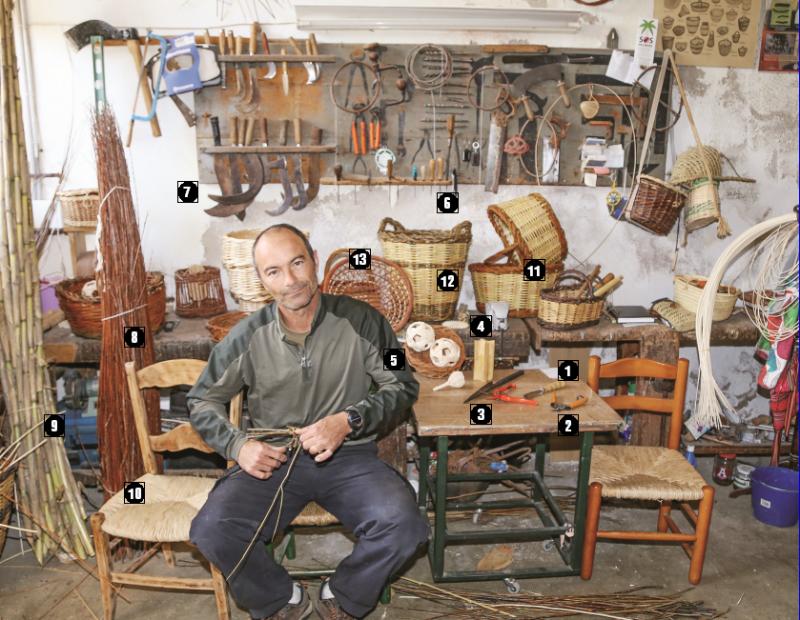Basketmaker
Tortellà (Garrotxa)
Dani Iglesias
When he was a little boy, Dani Iglesias used to spend hours doing handicrafts: from cross-stitching bracelets to sewing and even crocheting. Originally from the Costa Brava town of Blanes, at 12 years old, he used to mount fishing hooks. Each line had 250 knots, so he had to make the same knot 250 times. His wife’s family owned an espadrille business, which was his first contact with natural fibres. As the business became more industrialised, Dani chose to go in the opposite direction, working more and more with his hands, and baskets were a natural continuation. He felt at ease with plant fibres, and soon started to make various types of baskets. “I have the feeling I’ve made baskets all my life. After mastering the art of Catalan basket weaving, I’ve learnt techniques from Japan, Hungary, and other countries. The trade is disappearing, it’s hard to make a living and I have to do other things as well to support my family. For me it’s an escape, when I sit down and make baskets I forget everything. I consider myself half artisan, half artist”, Dani says, while showing us the objects he uses most in his craft.
1. Weaver’s knife. I have a great love for tools, I value them andy appreciate anything that is made by hand.
2. Scissors, used for ‘picking off’ or trimming any unwanted ends of willow once the basket is finished. Very important, I use them a lot.
3. Canal. A very typical tool for weaving. A long, strong piece used at the end, to help everything stay together, to round it all off.
4. Cleave. A tool, generally wooden, used for splitting willow into three or four down the length of the rod. Mine is a piece of wood, made by a friend of mine who makes bows for violins - it’s made of box wood.
5. Prickler balls, now a popular rattle for children, was originally used as a foot-volley ball in Thailand and Myanmar. It has been adopted by the Montessori and Waldorf schools as a learning tool.
6. Bodkins, a tool like a screwdriver with a pointed end, used to pierce the basket, inserting a piece or making space.
7. Podalls. Used to cut, trim or debranch the materials used for making baskets.
8. Wicker. It comes from the different types of willow (salix), and is the most common material used in basketmaking. There are many types of plant fibres, but this is the most used all across Europe.
9. Canes. Scientifically known as arundo donax, or giant cane, it is one of the several so-called reed species. It grows in damp soils all across our countryside.
10. Chair with seat of bulrush (wild corndog, Typha), a kind of reed. The rushes are harvested and the leaves are dried for later use in chair seats. It is very common in our houses, but becoming less and less used.
11. Mushroom basket, the most representative piece in Catalan basketmaking, the most popular and most used of all..
12. Cove. It used to be used to measure everything - vegetables, food, coal, etc. - as not everyone had scales.
13. Cofa, A round basket, used by fishermen to clean and store fish.
https://cabasset.jimdo.com/

